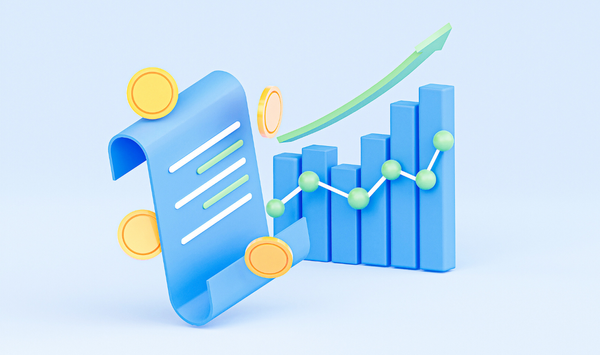Types of Discounts: Why Some Work, Some Fail, and What Shoppers Really Respond To
Learn the psychology behind types of discounts, the risks of overusing them, and how to build a discount strategy that boosts sales.
Tina Donati
Jun 12, 2024 · 6 min
Let’s talk about where, how, and why you should be using product bundles across your marketing funnel.

Tina Donati
Jun 12, 2024 · 6 min
Tina Donati is the Head of Marketing at Simple Bundles and has spent the past 7+ years helping Shopify brands streamline their tech stack and unlock growth through smarter product bundling, better UX, and cleaner ops.
When creating bundles for acquisition, gross profit per session (total cost of the sale minus the total cost to produce the good) should be your north star metric.
That's how you create enough money to pay for your acquisition costs. So, either a loss in gross margin is more than compensated by an increase in conversion rate.
… OR, you aim not to lose much conversion rate and increase total gross margin. Either path can result in more gross profit dollars per session.
And when you mix in AOV, they become even more powerful. By increasing the average amount each customer spends per order, you not only boost immediate revenue but also improve your gross profit per session.
This dual approach ensures that each transaction is more profitable, allowing you to cover acquisition costs more effectively and allocate resources towards further growth.
Let’s talk about where, how, and why you should be using product bundles across your marketing funnel.
To start, it's essential to understand the different types of bundling options available. There are three main bundle categories:
And two ways you can go about promoting them:
To maximize the impact of these strategies, it's important to identify the right moments in the customer journey to introduce bundles.
One of the lowest-hanging fruits? In your email campaigns and flows.
By targeting these specific flows, you can seamlessly integrate bundles into your customer’s shopping experience:
1. Welcome Flow
2. Post-Purchase Flow
3. BFCM and Holiday Campaigns
4. Winback and Retention Flows
Having identified these prime opportunities to promote bundles, the next step is to ensure your strategy is well-rounded and effective. To do this, a comprehensive checklist can help you stay on track and cover all essential aspects of your bundling strategy.
Having a solid strategy is vital, but it’s equally important to measure its effectiveness. Let’s crunch some numbers from a completely fake scenario to explain…
You operate a cosmetic brand that sells foundations and concealers. The foundations run at $45 (and cost you $15 to make), meaning your gross profit for your foundation is $30.
Your concealers are priced at $20 (costing $7 to make). The gross profit is $13.
Every week, you’re selling roughly 200 bottles of foundation and 50 tubes of concealer. That means your weekly gross profit for your foundation is $6,000. For your concealer, it’s $650.
After noticing your customers consistently purchase concealers and foundation, you create bundles by skin type.
ONE bundle combines your foundation and concealer for oily skin.
ANOTHER bundle is for the foundation and concealer for dry skin.
Customers can purchase the bottles of the foundation and concealer for their skin type together for $65 (the total cost of buying each item separately but grouped by skin type for convenience).
For this scenario, let’s pretend your weekly purchase rate of 200 bottles of foundation stays the same (although in true Black Friday season fashion, this number would likely increase. But let’s keep things simple).
With shoppers buying the bundle instead of the items separately, you’re looking at these numbers…
That’s a 300% increase in gross profit for your concealers just by bundling products based on skin type.
With such a high increase in gross profit per session, you can safely add a $5-$10 discount on the bundle. This will make your bundle even more enticing, driving even more conversions.
**These scenarios don’t take taxes or other operational costs into account.
With Simple Bundles, brands can provide their customers an unparalleled level of customization and choice, making their shopping experience truly unique.
Visit us at Simple Bundles to learn more, or install Simple Bundles for FREE on the Shopify app store.
1) How do bundles actually increase AOV?
Bundles encourage customers to purchase more items in a single transaction by presenting a higher perceived value than buying items individually. This raises the average order value (AOV) and improves gross profit per session, making acquisition campaigns more sustainable.
2) What’s the difference between multi-SKU, single-SKU, and infinite options bundling?
3) Where in the funnel should I promote bundles?
4) How should I price my bundles?
Aim for 20–30% above your current AOV, while maintaining strong margins. This ensures you’re adding incremental revenue without hurting profitability, and still creating an appealing offer for customers.
5) How do I know which products to bundle?
Look at your Shopify cart analysis report or ecommerce analytics. Products purchased together 5–10% of the time are strong candidates for bundling. You can also layer in zero-party data (quizzes, surveys) to customize bundles around customer preferences.
6) What are best practices for communicating bundle value?
7) How do I streamline bundle fulfillment?
Bundling apps like Simple Bundles let you:
8) Do bundles work year-round or just for holidays?
Bundles shine during holidays and sales events, but year-round they can anchor welcome flows, loyalty campaigns, and subscription offers. Many brands see 15–20% of revenue from bundles alone, even outside of peak retail periods.